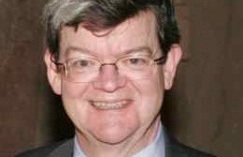by John Trybus, Managing Director
There are more than 1.5 million nonprofits in operation in the U.S. alone, according to one estimate by the National Center for Charitable Statistics. Talk about cause fatigue!
Is it even possible for nonprofits to break through such intense clutter to reach the hearts and minds (not to mention the pocketbooks) of key stakeholders?
The answer is a resounding yes, according to Thom Clark, but only among nonprofits equipped with an understanding – and application – of the true power of communications. Thom is the president of the Community Media Workshop and this week’s social strategist.
Surrounded by personal photos with some of Chicago’s greatest leaders (think Mayor Daley and Studs Terkel), I visited Thom in his office at Columbia College to learn more about how his organization helps causes to build capacity from a communications perspective in order to reach organizational goals.
“We help train nonprofit communicators how to get their stories out,” Thom explains. “We’re sort of like little league coaches who get people off the minor league bench and onto the front page of the New York Times.”
With nearly four decades experience in nonprofit management and social activism, Thom knows a thing or two about positioning causes for success. Here’s a preview of a few ways Thom believes nonprofits can build capacity:
- Rethink the “nonprofit” term: Many organizations would be better labeled as social enterprises and thereby change organizational messaging, according to Thom. After all, nonprofit is a tax status and “has little to say about how we do what we do in engaging the world,” he says. “I think even the way we commonly talk about ourselves, that we box ourselves into certain frames we have trouble busting out of.”
- It’s about the three-legged stool: Audience. Message. Story. Those are the three key components of effective cause communication. Thom explains that people are “moved by stories about your work – not your five point plan to save the world; not your mission statement.” He believes that a cause-based organization is successful when it can show how it transforms people’s lives.
- Become a PR advocate within your organization: “Unless there is more reliance on communication strategists as a core member of the leadership team, nonprofits will still stumble in effectively engaging audiences,” he says. Thom doesn’t think that the role of communications is fully realized within most organizations. He believes that the business argument – that public relations plays a key role in safeguarding an organization’s time, money, and resources – is among the best to use with management.
Listen to my interview with Thom Clark to learn more about the fascinating work of the Community Media Workshop, Chicago’s unique media landscape, and how to build capacity and sustainable PR practices for causes.

